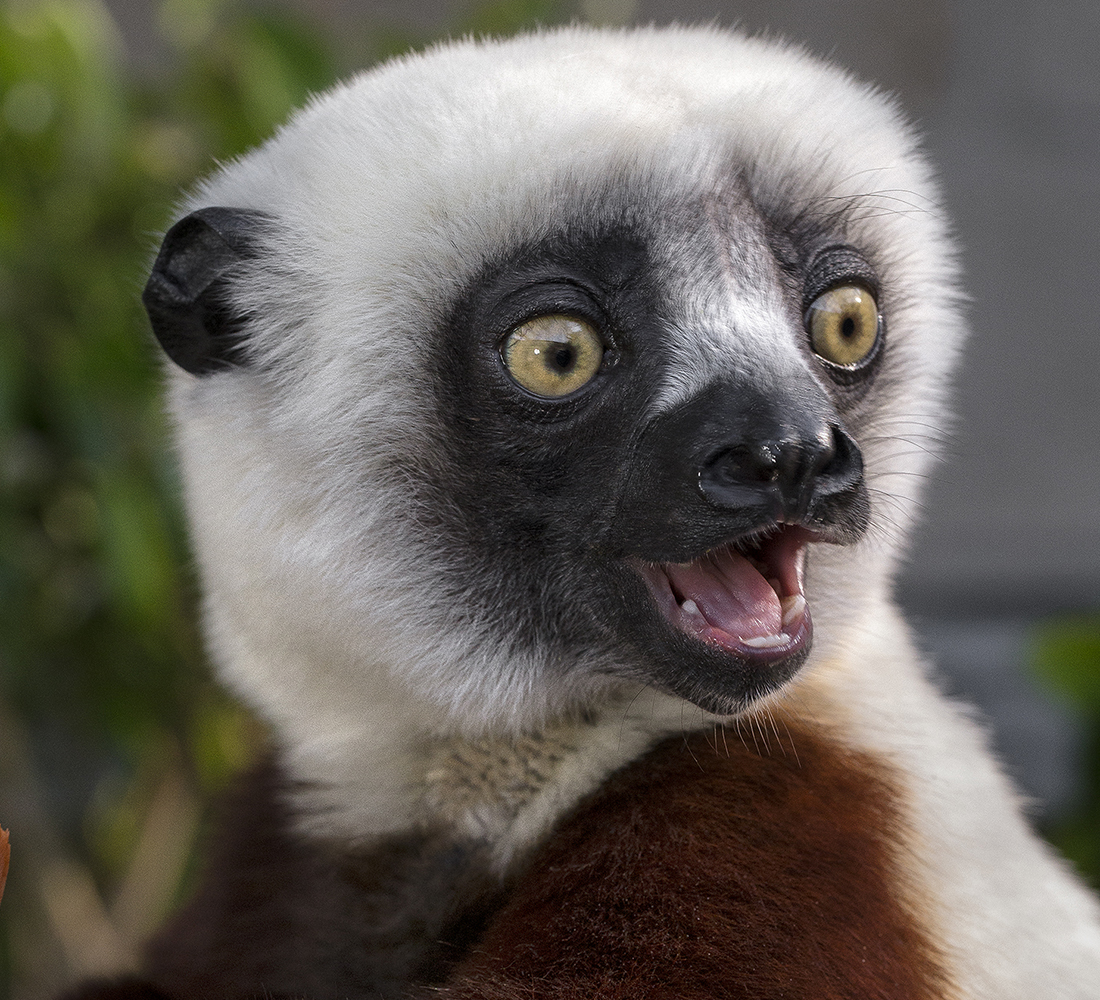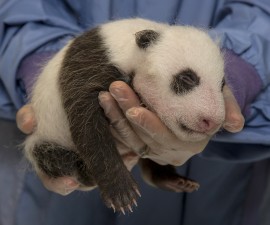BY Donna Parham
Photography by Ken Bohn
The island of Madagascar, sometimes called the “eighth continent,” is home to a quarter of a million species—and 70 percent of them are unique to the island. Its rate of habitat loss is alarming, however, and while conserving Madagascar’s plants and animals is a challenge, zoos are acting to safeguard certain species. When the new Conrad Prebys Africa Rocks opens later this year, its Madagascar area will showcase five species of the island’s most iconic inhabitants: the lemurs. Dean Gibson, curator of primates at the San Diego Zoo, is eager to share them with Zoo visitors as some of her favorite animals. She’s hoping that they will help educate people about the status of lemurs in the wild and the value of biodiversity.
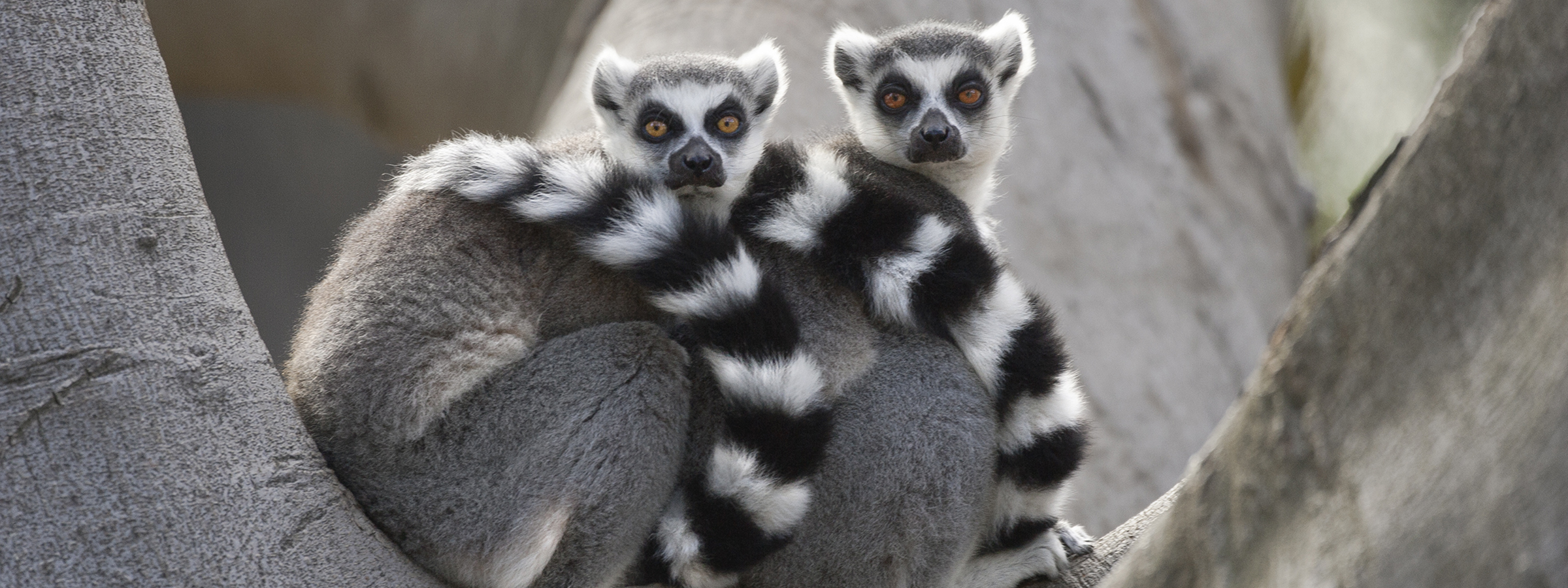
MEET THE PROS
Related to monkeys and apes, lemurs are prosimians, which literally means “pre-monkey.” It refers to the fact that this group specialized from the main primate lineage long before monkeys did. Along with their prosimian relatives, the galagos—also known as bushbabies—and the lorises, lemurs have large, light-reflecting eyes; a wet, dog-like nose; and a very good sense of smell.
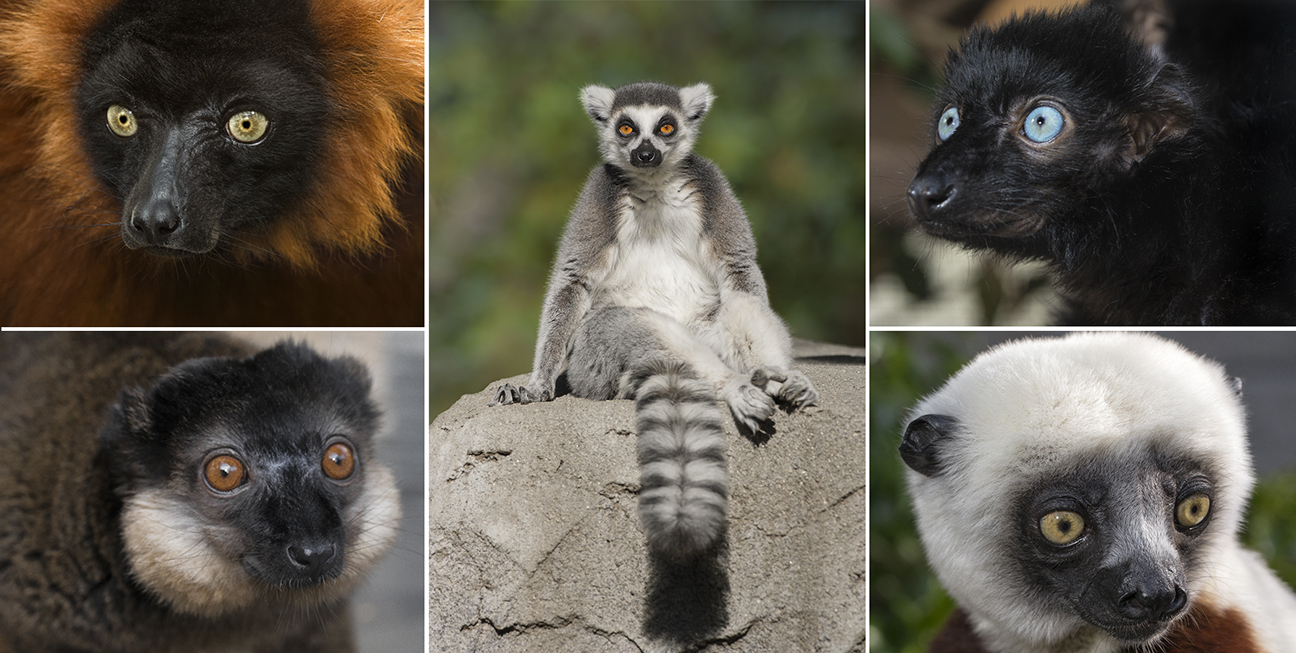
NEW HABITAT FOR FIVE SPECIES
Clockwise from top left: red ruffed lemur, ring-tailed lemur, blue-eyed black lemur, Coquerel’s sifaka, red-collared lemur.
What makes the Zoo’s new Madagascar habitat special, says Dean, is the lemur diversity. Ring-tailed lemurs Lemur catta might be the best-known species, but the area will also showcase red ruffed lemurs Varecia rubra, red-collared lemurs Eulemur collaris, blue-eyed black lemurs Eulemur flavifrons, and Coquerel’s sifaka (pronounced shi-FAHK) Propithecus coquereli. These species are among those that the Association of Zoos and Aquariums’ (AZA) Prosimian Taxon Advisory Group (TAG) has identified as needing sustainability assistance for the North American population. “With the exception of ring-tailed lemurs, there hasn’t been enough space for breeding these species in North America,” explains Dean. “By building the new exhibit, we will be able to participate in breeding programs to ensure healthy populations of these lemurs in zoos.”
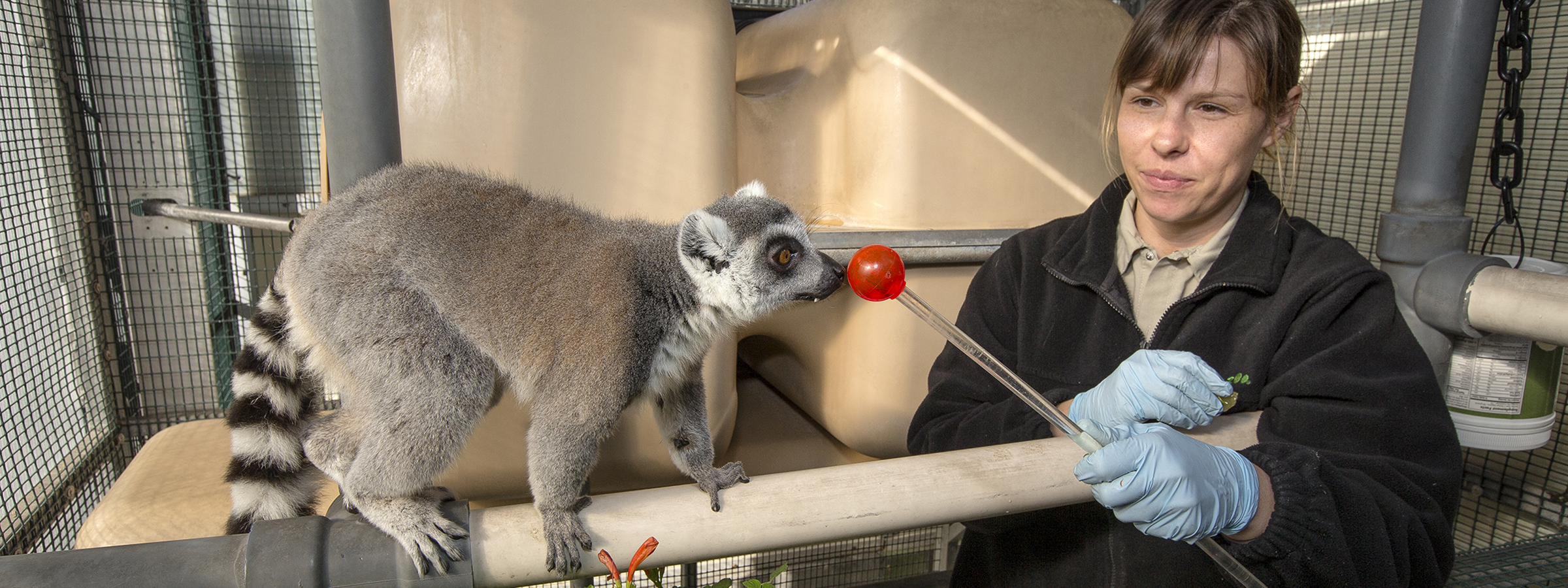
RINGS AROUND THE TAIL
While waiting for move-in day at Africa Rocks, the lemurs are enjoying comfortable digs behind the scenes. With soft, gentle snorts, a family of ring-tailed lemurs eagerly approaches primate keeper Kristen Watkins. She is teaching mom Tweena, dad Matthew, and baby Bijou to recognize the sound of a cowbell. “It means breakfast time and dinnertime, so they come running when they hear it,” she says. “Once they’re in their new habitat, we want to be able to use the bell as a signal to recall them into their bedrooms when we need to.” She’s also training the lemurs to be comfortable going in and out of their nest boxes and their crates, and to touch a target (as seen above) in exchange for a treat, something that can help keepers do health checks.
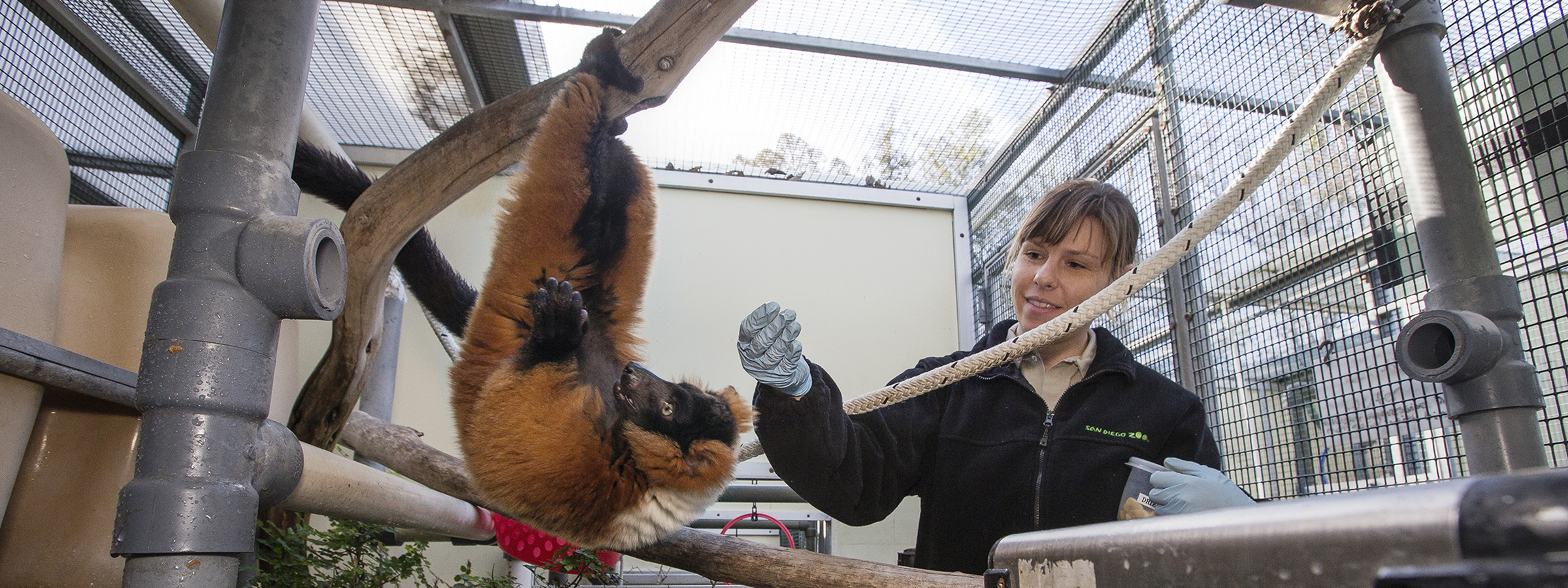
RED RUFFS
Unlike many females of our own species, Morticia the red ruffed lemur is thrilled to step on a scale. “She gets excited when she sees me walk in with the scale,” says Kristen, chuckling. “She goes right to it and stands on it, because she knows she’ll get a treat.” Today, treats are bits of dried fruit. The keepers’ cache of goodies also includes peanut butter, applesauce, almonds, fruit gelatin, and—on a hot day—frozen fruit juice.
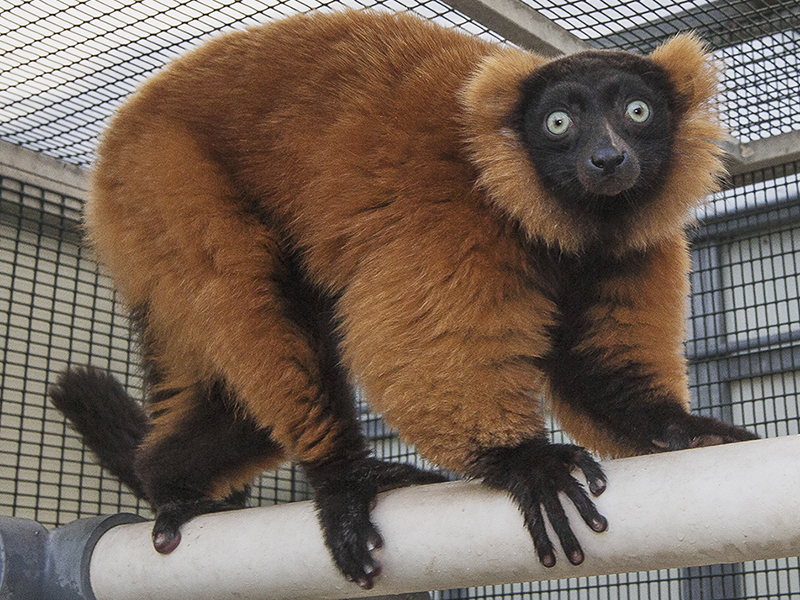
ENJOYING TEMPORARY QUARTERS
All the lemurs, including the red ruffed, are climbing and hanging out in their behind-the-scenes areas for now, until their new habitat in Africa Rocks opens this summer.
Due partly to its very small range—just a tiny patch of Madagascar forest—the red ruffed lemur has the regrettable distinction of being one of the world’s most endangered primates. The Zoo has a long history with the species, dating back to the 1960s. “Along with the Duke Lemur Center, our Zoo was responsible for establishing the founder population for North American zoos,” says Dean. “In 1987, Zoo staff contributed what has come to be a historic paper on the management and husbandry of red ruffed lemurs.”
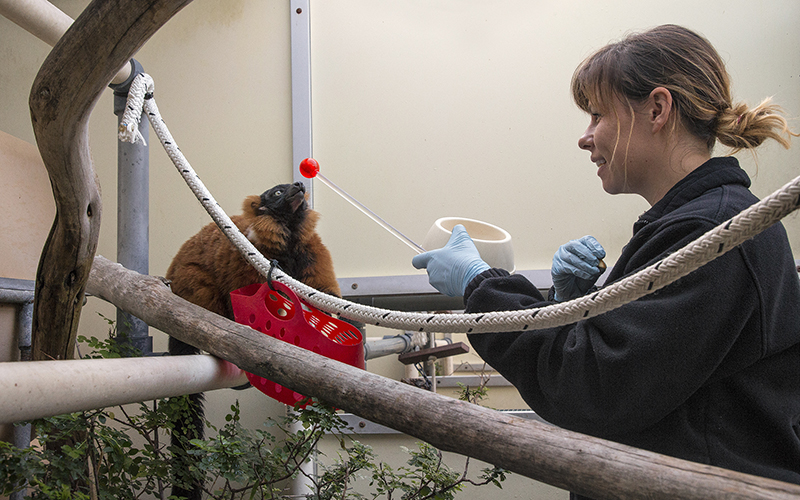
TEACHABLE MOMENTS
Young Ony is learning fast. Here he touches his nose to a target in return for a treat—although he appears to enjoy the attention as much as the dried fruit.
Morticia’s son, Ony, (Malagasy for “river”) represents a new generation—the first red ruffed lemur born at the Zoo in 16 years. Kristen asks the young lemur to “target”—she wants him to touch his nose to a small ball on the end of a wand, and he does. At Kristen’s request, he hangs by his feet so the keeper can inspect the obedient lemur’s stomach and can run her hands down Ony’s spine. “This is a very natural behavior,” says Kristen. “It’s how he might hang to forage in the wild.” When Kristen asks the lemurs to “station,” Morticia and Ony each climb onto a different platform. “They all have their own stations, where we can work with them individually,” she says.
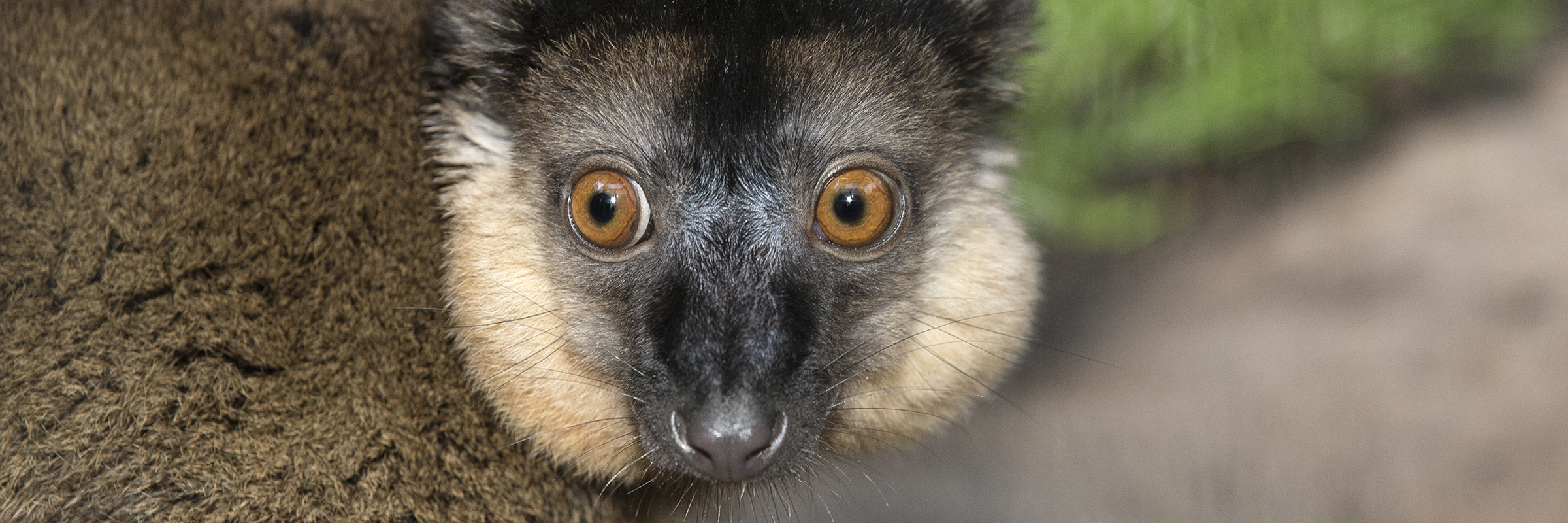
RED COLLARS
“The red-collared lemurs are some of the best at solving puzzles,” Kristen points out. “We keep them busy with enrichment items.” In their enclosure, a tub holds shredded cardboard as well as small food items, requiring the housecat-sized primates to use their brains and coordination to find the tidbits, as they would have to do to find food items in the wild.
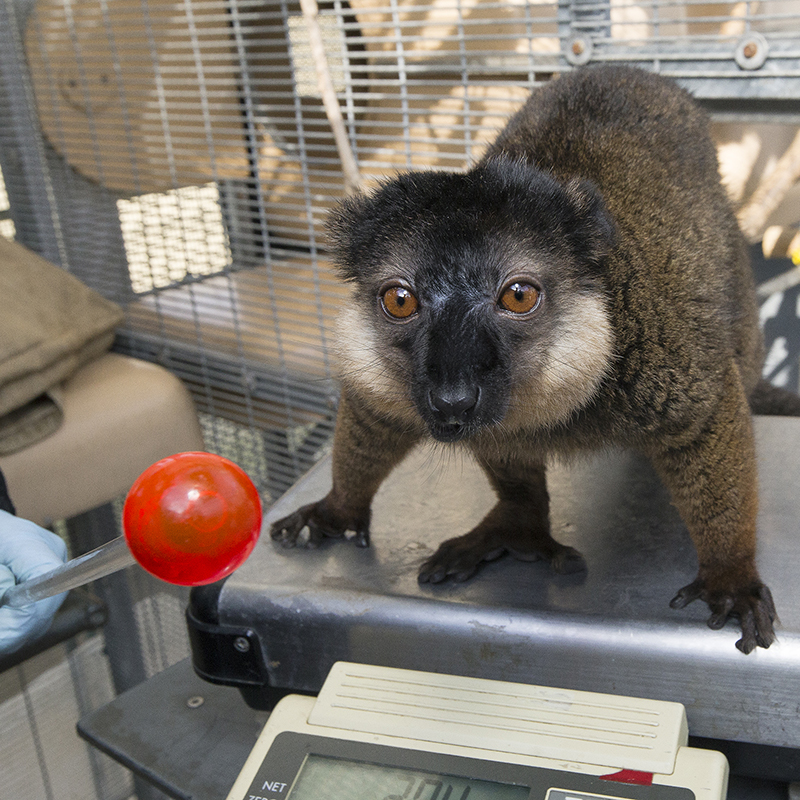
BIOMETRICS
Zaza isn’t afraid to step on a scale.
Keepers are hoping that, in addition to charming Zoo visitors, red-collared lemurs Remy and Zaza will produce the pitter-patter of little lemur feet. “With such an endangered group of animals, breeding is important,” says Kristen. AZA places a high importance on genetic diversity, carefully coordinating breeding pairs like Remy and Zaza through Species Survival Plan (SSP) programs, with the goal of establishing sustainable populations.
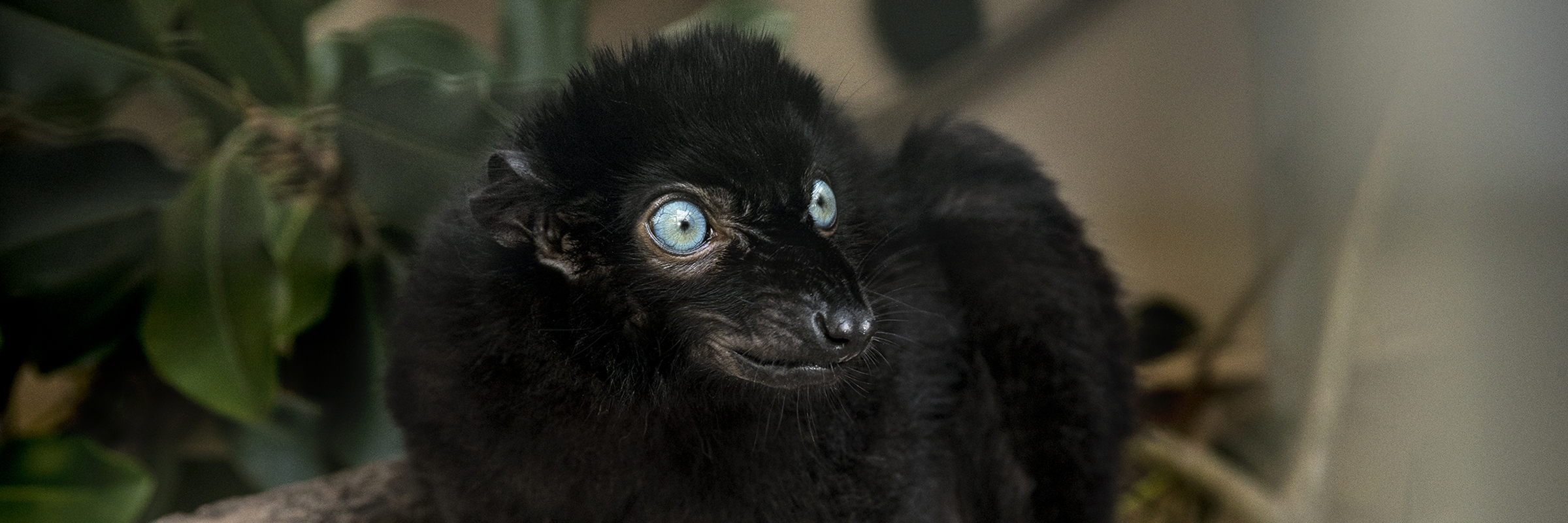
OL’ BLUE EYES
Only a few species of primates have blue eyes, like the blue-eyed black lemur. Two males, Aykroyd and Belushi—named for the comedic actors who played the legendary “Blues Brothers”—are currently without a mate, but they are practicing typical male behaviors. The lemurs enthusiastically rub their wrists and hands on branches, perches, other furnishings in their enclosure—and even on each other! “They’re spreading their scent,” explains Kristen, “which is a frequent lemur pastime.” While the Blues Brothers are coal-black now, they were born with light, orange-blonde fur. Males—but not females—turn completely black, a fact that led early researchers to mistakenly surmise that they were looking at two different species.
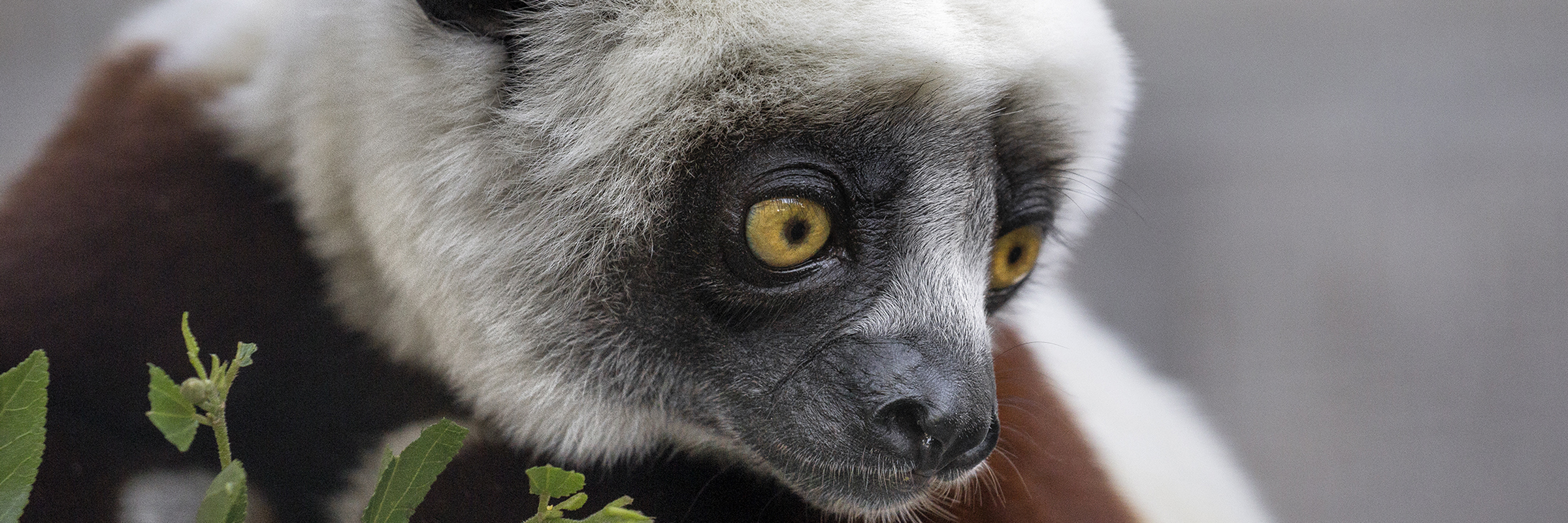
SIFAKAS ARE LEMURS, TOO
According to senior primate keeper Victoria Kuder, Agrippina and Thrax are “morning people.” She’s not talking about her fellow keepers; she’s referring to a pair of Coquerel’s sifakas. “They’re ready and waiting for me when I get here,” she says. “They go out and play, and then in winter they come inside, where it’s warm and cozy, to take a midday nap.”
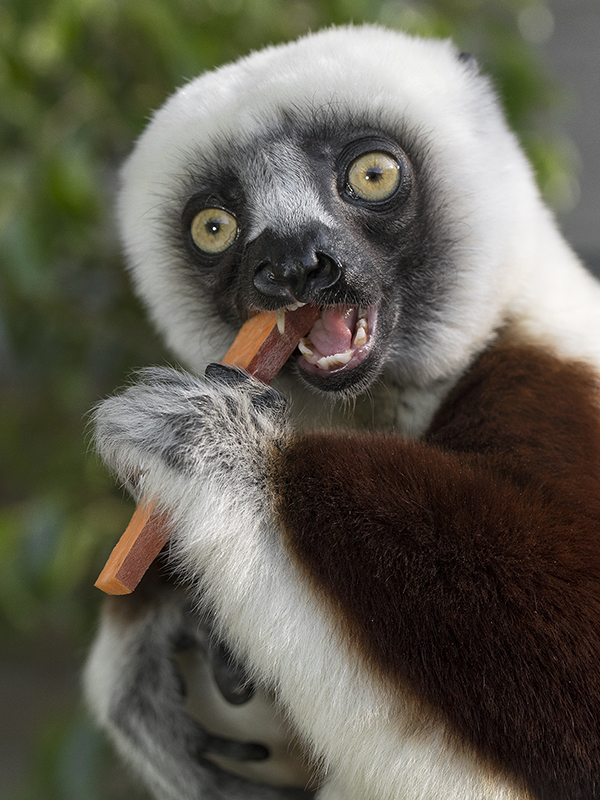
SNACK TIME
In addition to yams and other veggies, sifakas eat leafy greens, beans, nuts, browse, and specially formulated leaf-eater biscuits.
Like the other lemurs, the sifakas participate in their own care: raising their arms, holding out their hands, going in and out of their crates when asked by their keeper. They aren’t so calm when they’re on the move, though. Sifakas move from tree to tree in what’s known as a “vertical-cling-and-leap” style of locomotion. They can make themselves quite comfortable by wrapping their hands and feet around a vertical branch or tree trunk, with bent knees held tightly to their chest. To get around, a sifaka hurls itself away from the trunk, pushing off with its legs and twisting in midair to land on another tree. When traveling on the ground, they stand upright and spryly hop sideways, extending their arms for balance—a performance that observers call the “sifaka dance.”

MADAGASCAR
Unfortunately, forest loss means sifakas are forced to travel on the ground more often than they used to. On Madagascar, entire forests—even protected areas—are being destroyed due to unsustainable agricultural practices, timber extraction, and mining. Alternative sources of employment and energy hold the key to conserving Madagascar’s wildlife.
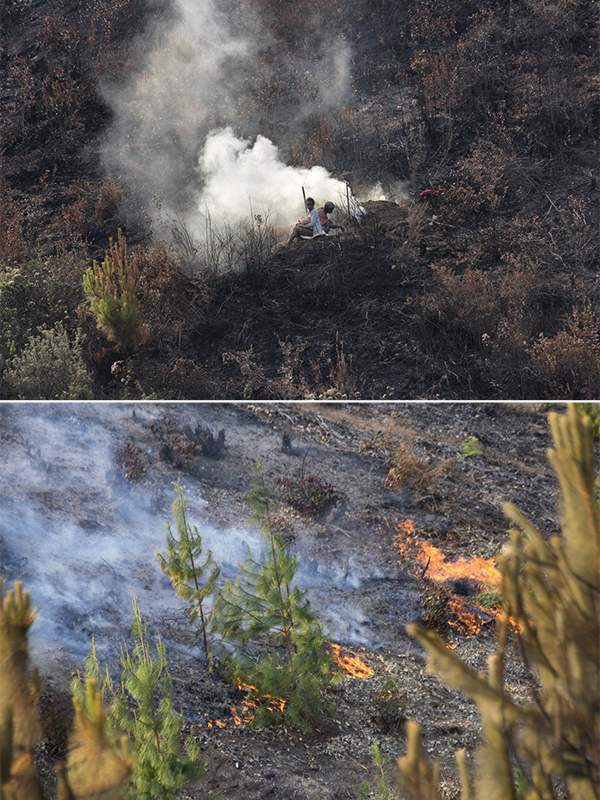
UNSUSTAINABLE LAND USE
Top: Producing charcoal is a way to make a living in Madagascar, but it destroys forests. Bottom: Traditional slash-and-burn agriculture destroys habitat that lemurs and other wildlife depend on.
Chia Tan, Ph.D., senior scientist at the San Diego Zoo Institute for Conservation Research, heads up lemur conservation field projects in Maromizaha, Madagascar, critical rain forest habitat that supports 13 lemur species. She and her colleagues provide conservation education and lead local communities in exploring alternative livelihoods such as beekeeping, fish-farming, and tourism. The team is also using camera trap technology to learn more about lemurs and their predators (one of which is the fossa). They plan to expand their research to include studies on lemur social behavior, physiology, reproduction, and even gut microbes.
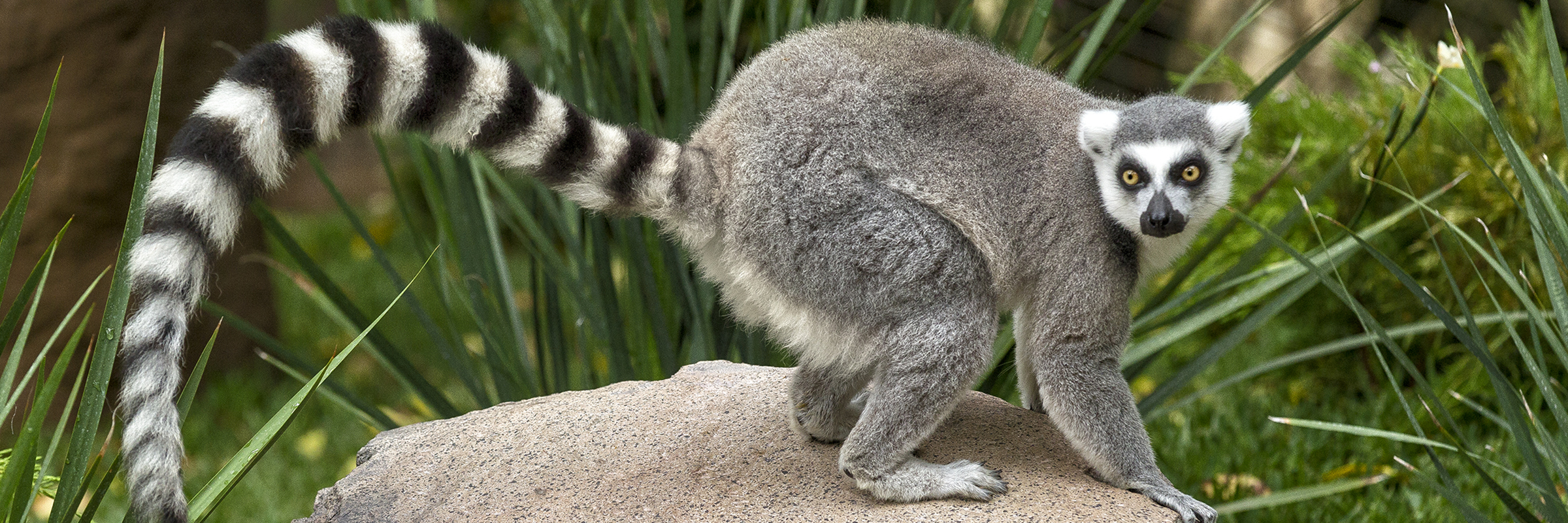
AFRICA ROCKS
Two lemur habitats in Africa Rocks will portray the variation in Madagascar’s climate and flora. While one spotlights dense forest, the other is reminiscent of Madagascar’s dry forest. Ed Lewins, exhibits project coordinator, acknowledges that his work takes a back seat to the stars of the show. “People come to the Zoo to see animals,” says Ed. While most people might not notice design details of the new lemur exhibits, he says that a lot of effort has gone into trying to make use of the full three-dimensional space. “By building the right kind of habitat, we bring out the animals’ natural behaviors,” he says.
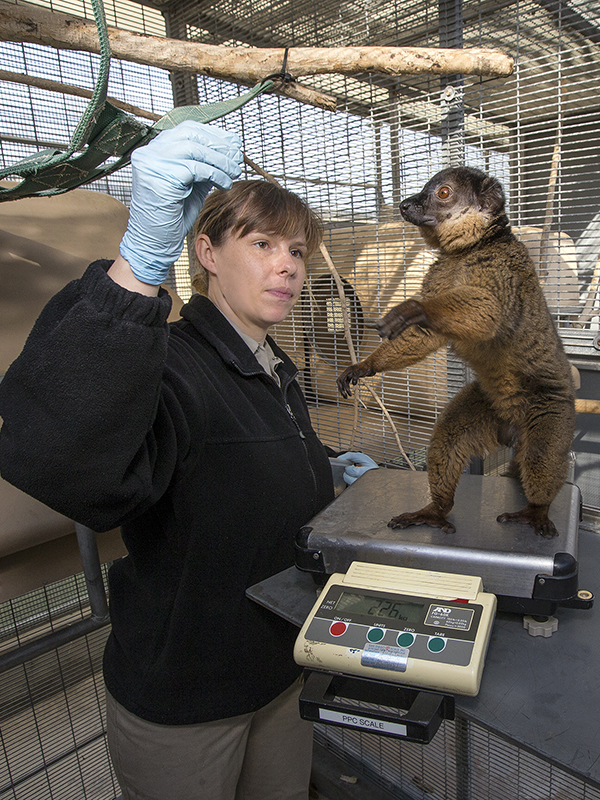
HEALTHY HABITS
The lemurs of Africa Rocks are learning to participate in their own healthcare.
Dean predicts that, based on their ecology, “The five species will use different parts of the exhibit.” None of the species in this exhibit occur naturally together in the wild. However, there are similar mixes of these genera in the wild that do not compete for resources, which is why she’s expecting them to get along. The red ruffed lemurs, for example, prefer treetops, while the ring-tailed lemurs often can be found sauntering along the ground.
Kristen shares her excitement about the new Africa Rocks Madagascar habitat. “A lot of the lemurs are interested in people, so it will be fun to see how they interact with visitors,” she says. “I’m really looking forward to doing keeper talks and sharing my passion for these animals with our guests.”

